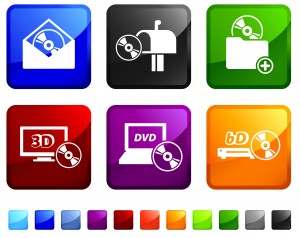Great YouTube ads are born from great creative ideas. But how does the shift to digital video change the creative process? Google’s head of agency sales, Tara Walpert Levy, shares insights from a conversation between Sal Masekela and creatives David Droga and Emily Anderson.
“Make it viral.” Uttering that ask in a conference room is about as popular as announcing you have an actual virus. And while that particular pitfall may seem painfully obvious in today’s sophisticated world of content marketing, there are other traps that hold us back from creating great videos that aren’t as clear.
YouTube created the “ Behind the Scenes” series to explore the challenges that agencies and brands face making digital video (and YouTube ads, specifically) and to see how they’re solving them.
In our latest video, TV and YouTube host Sal Masekela hosts a candid conversation between creative chairman David Droga and creative director Emily Anderson. The topic at hand? The shift from TV to digital video and what this shift means for creatives today.
What follows are four insights from Anderson and Droga on avoiding video pitfalls and making great video content:
1. Redefine what it means for a video to go viral
Let’s start with the classic pitfall: setting out to make a viral video. Or as Sal Masekela puts it, “give me a double rainbow.” As I’ve worked with brands on YouTube, I’ve realized that success on YouTube is a lot like success in the music industry: It’s not about one-hit wonders. It’s about finding a sustainable audience that jumps at every new song you release (or in this case, video). Challenge your team to figure out what “viral” really means for your brand: How big is your audience—is it really millions? What’s your primary metric? GRPs? Views? Or engagements and conversions? Do you want to build an audience this quarter—or this weekend?
Think about building a library of content that maximizes engagement opportunities all along the consumer journey. From inspirational brand messaging that aligns with your audience’s passion points to how-to or product demos, make it about building a one-stop shop for inspiration, entertainment, and utility. Johnson & Johnson Consumer’s CLEAN & CLEAR® is a fantastic example of that.
2. Treat “user experience” as a mind-set, not a department
Successful creatives today are user experience experts. As they create, they go out of their way to experience their work the way their audience will. Emily Anderson describes watching a video in a studio with high-end audio equipment and then comparing the sound on laptop speakers. Consider reviewing your work on your smartphone with $5 headphones, while riding the bus. Would you still watch it? The context in which your audience watches a video can be just as influential as the content itself.
Google’s Art, Copy & Code recently launched Unskippable Labs to experiment with what mobile context means for video ads. Its first experiment with Mountain Dew® Kickstart™ suggested that mobile video ads don’t necessarily need to be short and sweet; they can be longer, richer, and less linear than traditional ads and still positively affect brand lift. Mobile viewers might surprise you, so try to leave room to learn from what they like and adjust your video campaign mid-stride.
3. Engage fans in a two-way dialogue (don’t turn off YouTube comments)
Ask a YouTube creator, such as Tyler Oakley or Grace Helbig about comments, and he or she will talk about them as a sources of inspiration—not sources of frustration. Helbig recently said that she thinks of her audience as her “boss,” guiding her content creation and giving her ideas. Anderson agrees. Turning off comments? “Flabbergasting,” she says. The inclination to turn off comments means that brands are thinking of YouTube as one-way communication rather than an opportunity for interaction.
Instead, turn on comments and then consider how you can use video to show viewers you’re listening. Under Armour collected reactions from viewers about its latest ads featuring Gisele Bündchen. Some reactions were positive, some negative: Under Armour heard them all and created a reaction video with Gisele in response to the conversation. As Tweets like “Gisele is just a model” appear about her, Bündchen pushes through and keeps on kickboxing in the spirit of “I WILL WHAT I WANT.“
4. Evolve your digital storytelling from a strict story arc to a never-ending story
Storytelling has changed in the digital era. Like it or not, the ad industry’s traditional approach to a story arc—beginning, middle, and end in a 30-second spot—is a thing of the past. Rather than tellingonestory in one video and uploading it once on YouTube, David Droga encourages brands and creatives to tell stories that can’t be “contained.” Be prepared to evolve an idea and create the next chapter based on your audience’s reaction.
And the man practices what he preaches; Droga5 created an excellent example of this. After Honey Maid released its “This is Wholesome“ ad showing diverse images of the modern family, it got some negative reactions. Rather than running from the controversy, the brand team wrote the next chapter. In a follow-up video, Honey Maid transformed messages of hate into a message of love by inviting two artists to create a sculpture out of printed versions of negative and positive comments. The response was overwhelmingly positive and hey, Honey Maid racked up a Cannes Gold Lion as a bonus.
Whether your creative idea starts on a cocktail napkin or a whiteboard, YouTube is a canvas of unlimited possibilities. We developed this film and others in the “Behind the Scenes” series to give agencies and brands the competitive and creative edge they’re after. There are more formats, options, and tools at our fingertips than ever before. But that means you can expand beyond the traditional story arc. Flex the 30-second spot. Ditch the word “viral” forever. You’re shaping the future of video; what stories do you want to tell?
Originally published on www.thinkwithgoogle.com
